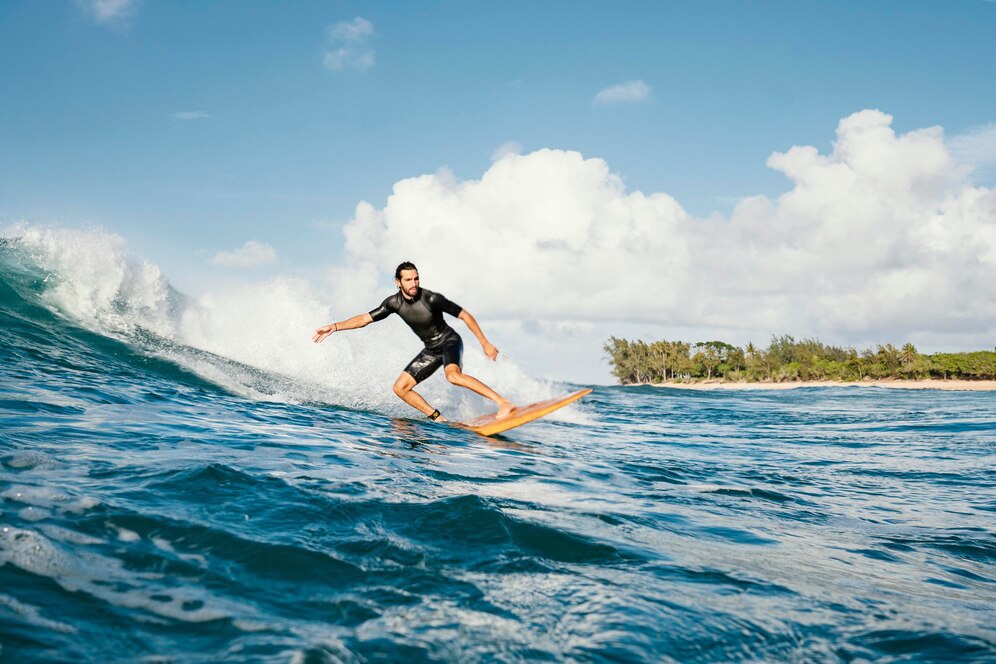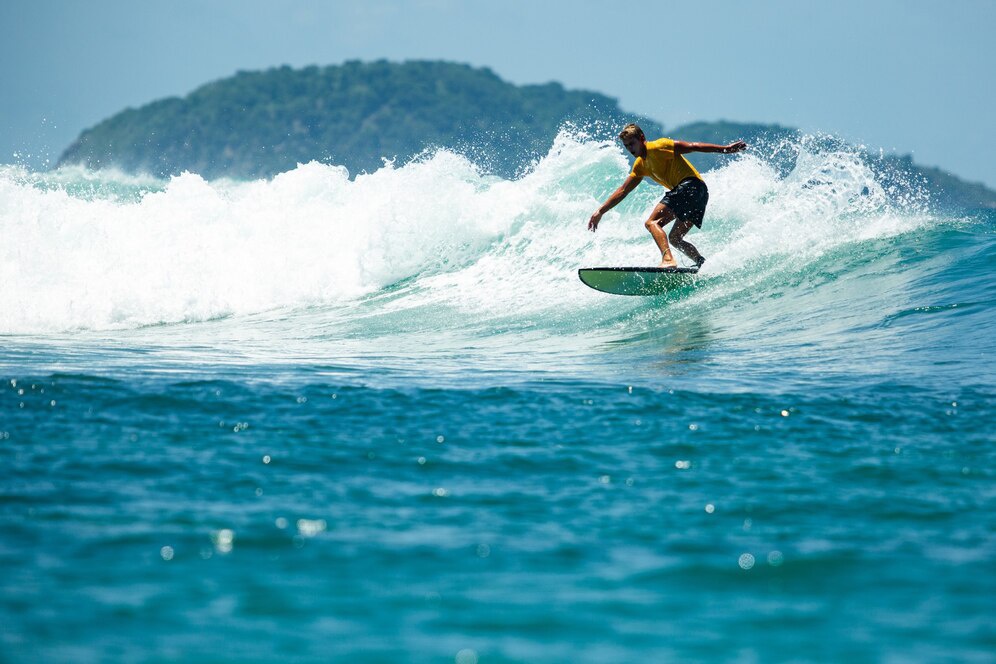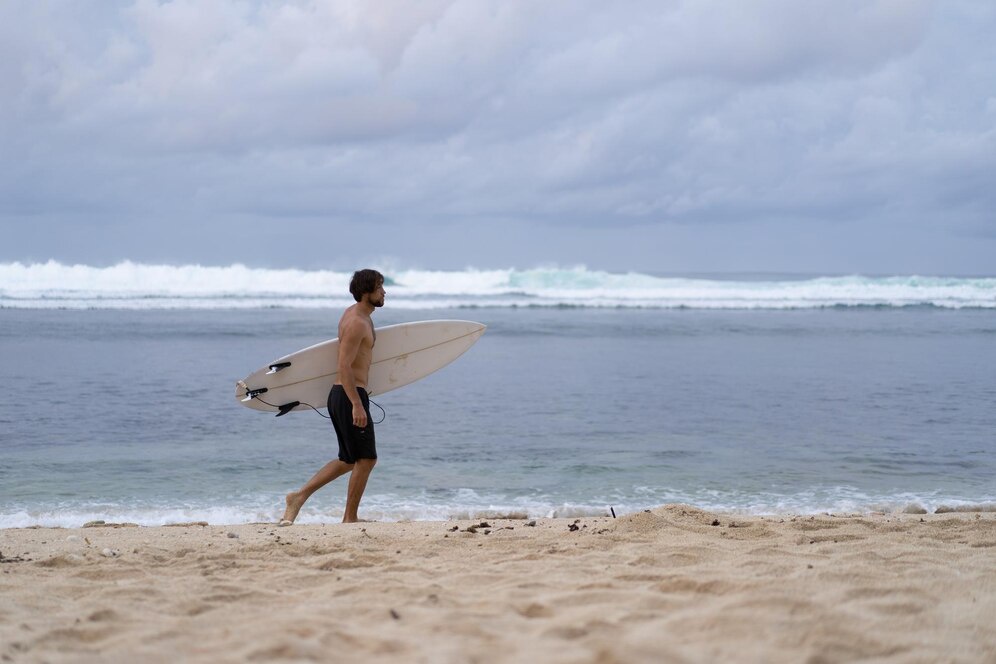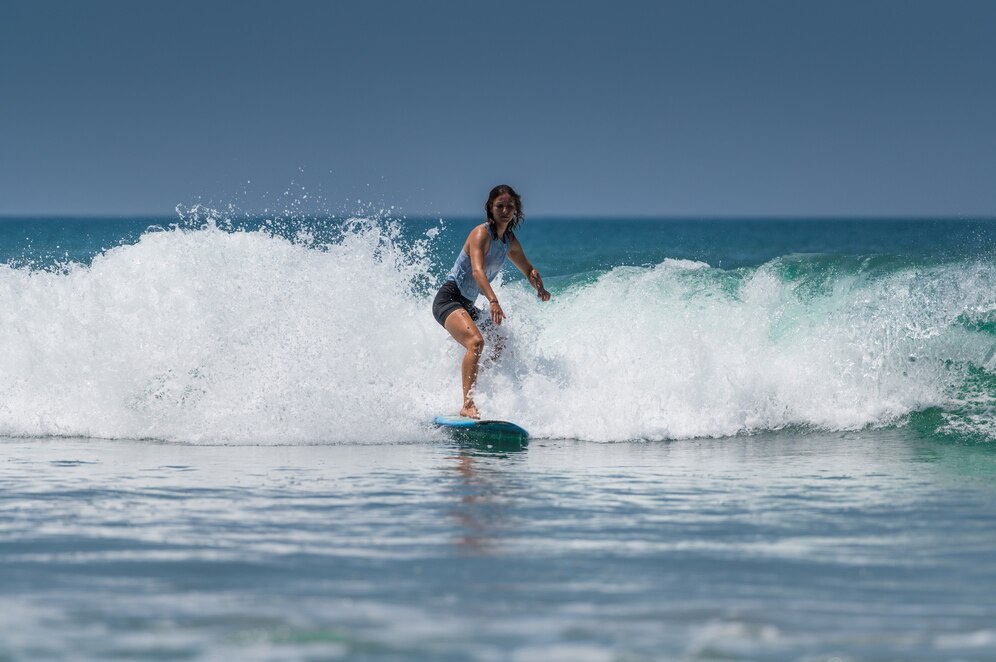The Travel Blog

Surfing in Bali: Riding the Island’s Legendary Waves
Where Paradise Meets the Perfect Wave
Bali isn’t just a destination – it’s a dream, especially for those who chase waves. Imagine paddling out beneath a golden sunrise, volcano silhouettes rising in the background, the scent of frangipani in the air, and a peeling turquoise wave beckoning just ahead. That’s surfing in Bali – a mix of adrenaline, serenity, and raw nature that hooks both seasoned surfers and curious first-timers.
Whether you’re a barrel-chaser or learning to pop up for the first time, Bali offers something for every surf traveller. This article explores Bali’s legendary surf scene through local stories, must-visit breaks, practical travel tips, and responsible surf travel advice. You’ll also find personal anecdotes and expert suggestions woven throughout to help you make the most of your surfing Bali adventure.
Why Bali Is a Surf Mecca
The Consistency of the Swell
Thanks to its unique geography, Bali gets reliable swells year-round – ideal for surfers of every level. The dry season (April–October) brings easterly trade winds that make the west coast shine, while the wet season (November–March) pushes the action to the east coast.
A Variety of Breaks
From mellow beach breaks to powerful reef barrels, Bali spoils you for choice:
- Kuta Beach – perfect for beginners with soft sand bottoms
- Uluwatu – a world-famous reef break for experienced surfers
- Canggu – ideal for intermediates with fun, fast peaks
- Padang Padang – known as the “Balinese Pipeline”
Bali’s waves are as diverse as its landscapes, making it one of the best surf travel destinations on Earth.
Top Surf Spots in Bali

1. Kuta Beach: The Beginner’s Playground
If you’re new to wave riding in Indonesia, Kuta is your ideal starting point. You’ll find a stretch of soft, sandy waves and dozens of surf schools offering rentals and lessons.
Top Idea: Stick to early mornings when the winds are calmer and the crowd lighter.
2. Canggu: The Hipster Surfer’s Paradise
Canggu is a vibrant village with excellent surf spots like Batu Bolong and Echo Beach. The vibe is laid-back and artsy, perfect for digital nomads and intermediate surfers.
Nearby Eats: Try out local warungs (small cafes) serving fresh smoothie bowls or nasi goreng post-surf.
3. Uluwatu: For the Brave and Barrel-Hungry
Uluwatu’s waves break over sharp coral reefs and offer serious barrels. Experienced surfers flock here for the challenge and the cliffside sunset views.
Caution: This isn’t beginner territory – paddle out only if you’re confident in reef breaks and strong currents.
4. Medewi: A Longboarder’s Dream
A sleepy village north of the popular surf zones, Medewi features long, slow left-handers – perfect for longboarders or those who like smoother rides.
Personal Anecdote: My First Wave in Bali
I still remember standing waist-deep at Kuta Beach, surfboard wobbling under my arm, adrenaline buzzing. A local instructor named Wayan gently shouted, “Now, paddle!” I paddled. The wave caught me. I stumbled, laughed, and finally stood up for two glorious seconds.
It wasn’t perfect, but it was unforgettable.
That single moment transformed surfing from something I admired on YouTube into a real, tangible joy. And that’s the magic of surfing in Bali — the island nurtures both the wave and the rider.
Surf Culture & Community in Bali
A Deep-Rooted Surf Scene
Since the 1970s, Bali has been home to a vibrant surf community. Australian surfers were among the first to explore its waves, but now surfers from every corner of the globe flock here.
You’ll find:
- Surf lodges and hostels that offer inclusive surf packages
- Local shapers who craft beautiful, high-performance boards
- Beach ceremonies like Melasti, reminding visitors of Bali’s sacred traditions
Respecting Local Etiquette
When surfing in Bali, respect the lineup:
- Don’t snake waves
- Greet locals in the water
- Share the stoke, not aggression
This isn’t just about manners. It’s about preserving Bali’s surf harmony.
Essential Gear and Rentals

What to Bring
While many items can be rented locally, experienced surfers might prefer bringing:
- Your favourite board (in a board bag with travel insurance)
- Reef booties (especially for places like Uluwatu)
- Zinc sunblock (reef-safe and long-lasting)
- Rash guard or spring suit
Where to Rent or Buy
From Kuta to Canggu, surf shops and rental stalls are everywhere. Boards can be rented for as little as IDR 50,000/hour (~£2.50), and some shops allow overnight hire.
Bonus: Consider visiting Bali Board Factory in Kerobokan to see where many local boards are shaped.
Thinking of combining surfing with travel savings? Check out How to Plan an Adventure Sports Trip on a Budget.
Best Time to Surf in Bali
| Season | Months | Surf Coast | Suitable For |
|---|---|---|---|
| Dry | April–October | West (Kuta, Uluwatu) | All levels |
| Wet | November–March | East (Nusa Dua, Serangan) | Intermediate–Advanced |
Tide Hack: Mid to high tide often delivers the cleanest conditions, particularly at reef breaks.
Sustainable Surf Travel in Bali
Bali faces challenges like plastic pollution and overtourism. As a conscious surf traveller, you can make a difference.
Here’s how:
- Use reef-safe sunscreen
- Join beach clean-ups (organised by groups like Bye Bye Plastic Bags)
- Avoid single-use plastics – bring your reusable water bottle
- Respect marine life – avoid stepping on coral or disturbing turtles
Your actions impact the local ecosystem — protect the very ocean you came to surf.
Linking to Your Surf Lifestyle
Bali isn’t just about the waves — it’s the lifestyle that comes with it. When you’re not in the water.
You’ll enjoy:
- Yoga sessions in jungle shalas
- Tropical cafes with vegan menus
- Scooter rides through rice paddies
- Sunset beach bonfires with fellow surfers
It’s not just a surf trip. It’s a surf awakening.
Planning Your Surf Trip to Bali
Flights & Visas
Bali’s main airport, Ngurah Rai (DPS), is well-connected globally. Most travellers receive a Visa on Arrival valid for 30 days, with an option to extend.
Accommodation Tips
Choose your base according to your skill level:
- Kuta: Beginner surf hostels and schools
- Canggu: Chic surf villas and co-working cafés
- Uluwatu: Clifftop retreats for advanced wave seekers
Transportation
Hire a scooter (IDR 60,000/day) to zip between breaks. Always wear a helmet and carry your international driving licence.
Conclusion: The Island That Surfs with You

There’s a reason surfers return to Bali year after year. It’s not just about catching the perfect wave — it’s about catching the perfect moment. Whether it’s your first wobbly pop-up or your hundredth barrel at Uluwatu, surfing Bali leaves a lasting imprint.
So, if you’ve been dreaming of a surf escape that balances challenge, culture, and connection, Bali is waiting, board in hand.
Ready to Ride Bali’s Legendary Waves?
We’d love to hear from you! Share your best Bali surf spot in the comments, tag a friend you’d ride waves with, or subscribe for more epic adventure guides.
If you’re surfing in different climates, this guide on How to Pack for Multi-Climate Adventure Trips will come in handy.









